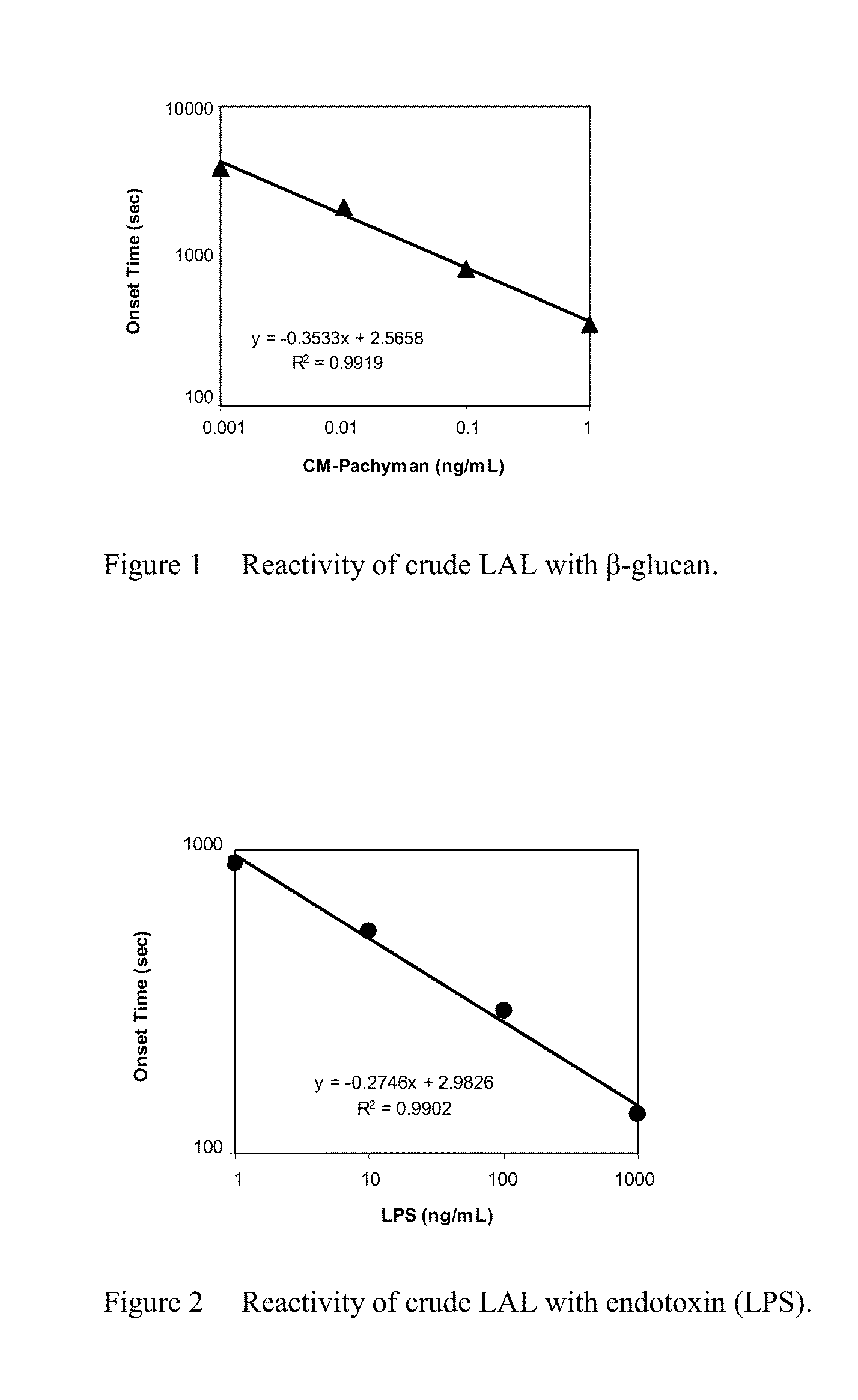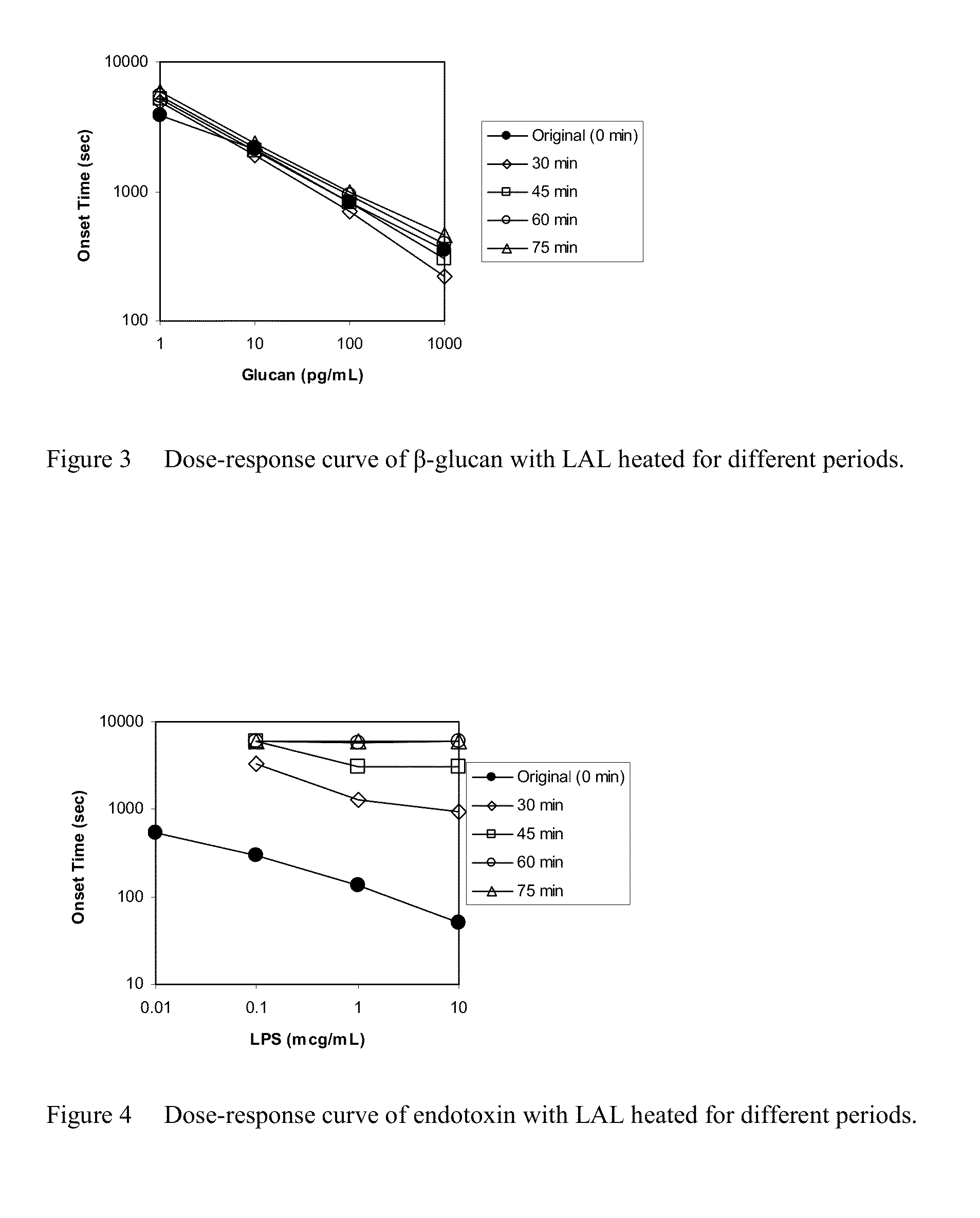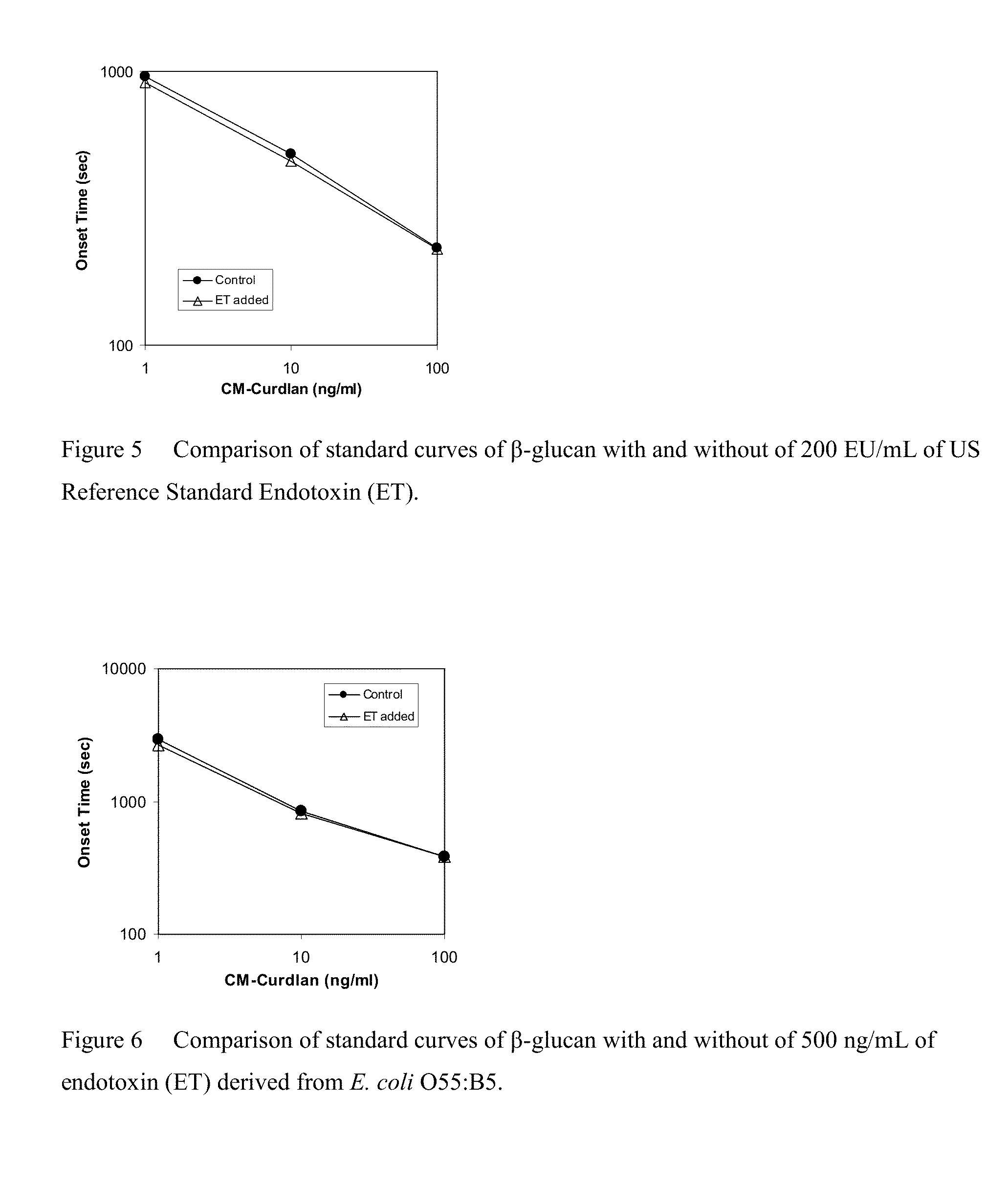Heat-treated limulus amebocyte lysates
a technology of limulus amebocytes and lysates, which is applied in the field of heat-treated limulus amebocyte lysates, can solve the problems of false positives, pyrogenic, potentially lethal, mitogenic, etc., and achieve the effect of reducing endotoxin reactivity and reducing the sensitivity of the lal to endotoxin
- Summary
- Abstract
- Description
- Claims
- Application Information
AI Technical Summary
Benefits of technology
Problems solved by technology
Method used
Image
Examples
example 1
Reactivity of Crude LAL with Endotoxin and β-Glucan
[0081]Crude LAL was prepared by harvesting hemolymph from American horseshoe crabs (Limulus polyphemus). The resulting hemolymph was centrifuged at 150 G for 15 minutes to collect amebocytes. The amebocytes were rinsed with 3% sodium chloride and recentrifuged at 150 G for 15 minutes. After second rinsing with 3% sodium chloride and harvesting steps by the centrifugation at 150 G for 15 minutes, the resulting amebocytes were lysed by osmotic shock with addition of water for injection, and resulting crude LAL stored at 2-8° C. until further use.
[0082]LAL for the measurement was prepared by adding 0.34 M sodium chloride, 0.04 M magnesium sulfate, 0.35% (w / v) dextran, and 0.04 M HEPES buffer (pH 8.0) to 20% (v / v) crude LAL. Carboxymethylated pachyman (CM-Pachyman, Megazyme Lot 90501) as a β-glucan and Lipopolysaccharide (endotoxin) derived from E. coli O55:B5 (List Biological Lab, Inc., lot 20315A5) were dissolved and diluted with wate...
example 2
Effects of Temperature on the Inactivation of the Endotoxin and β-Glucan Cascades
[0085]Each 1 mL of the crude LAL prepared as described in Example 1 was distributed in depyrogenated 13 mm glass tubes. The glass tubes were incubated on an aluminum block heater at a temperature between 40° C. and 50° C. A glass tube was sampled at the scheduled incubation time, and was stored in a refrigerator. The glass tubes were centrifuged at 170 G for 20 minutes with a refrigerated centrifuge. The supernatant in the glass tubes was used as heat-treated crude LAL.
[0086]LAL for use in the assay was prepared as described in Example 1 by using the sampled crude LAL. A solution of 50 ng / mL endotoxin derived from E. coli O55:B5, and a solution of 100 ng / mL carboxymethlated curdlan (CM-curdlan, Wako Chemicals) (a β-D-glucan) were measured with LAL. Onset times were measured as described in Example 1. The results are summarized in Tables 1 and 2.
TABLE 1Effect of Temperature on the Reactivity of LAL with...
example 3
Effect of Heating on Dose-Response Curves of Endotoxin and β-Glucan
[0088]Each 5 mL of the crude LAL prepared as described in Example 1 was distributed in depyrogenated 10-mL glass vials. The glass vials were incubated on an aluminum block heater at 47° C. A glass vial was sampled at the scheduled incubation time, and was stored in a refrigerator. The crude LAL in the vials was transferred to polypropylene centrifuge tubes, and the centrifuge tubes were centrifuged at 2500 G for 20 minutes with a refrigerated centrifuge. Supernatant in the centrifuge tubes was used as heat-treated crude LAL.
[0089]LAL for use in the assay was prepared as described in Example 1 by using the sampled crude LAL. A dilution series of endotoxin derived from E. coli O55:B5 between 10 ng / mL and 10,000 ng / mL, and a dilution series of CM-Pachyman between 1 pg / mL and 1000 pg / mL were measured with LAL. The procedures of the measurement were the same as described in Example 1. The results are summarized in FIGS. 3...
PUM
| Property | Measurement | Unit |
|---|---|---|
| temperatures | aaaaa | aaaaa |
| temperature | aaaaa | aaaaa |
| concentrations | aaaaa | aaaaa |
Abstract
Description
Claims
Application Information
 Login to View More
Login to View More - R&D
- Intellectual Property
- Life Sciences
- Materials
- Tech Scout
- Unparalleled Data Quality
- Higher Quality Content
- 60% Fewer Hallucinations
Browse by: Latest US Patents, China's latest patents, Technical Efficacy Thesaurus, Application Domain, Technology Topic, Popular Technical Reports.
© 2025 PatSnap. All rights reserved.Legal|Privacy policy|Modern Slavery Act Transparency Statement|Sitemap|About US| Contact US: help@patsnap.com



